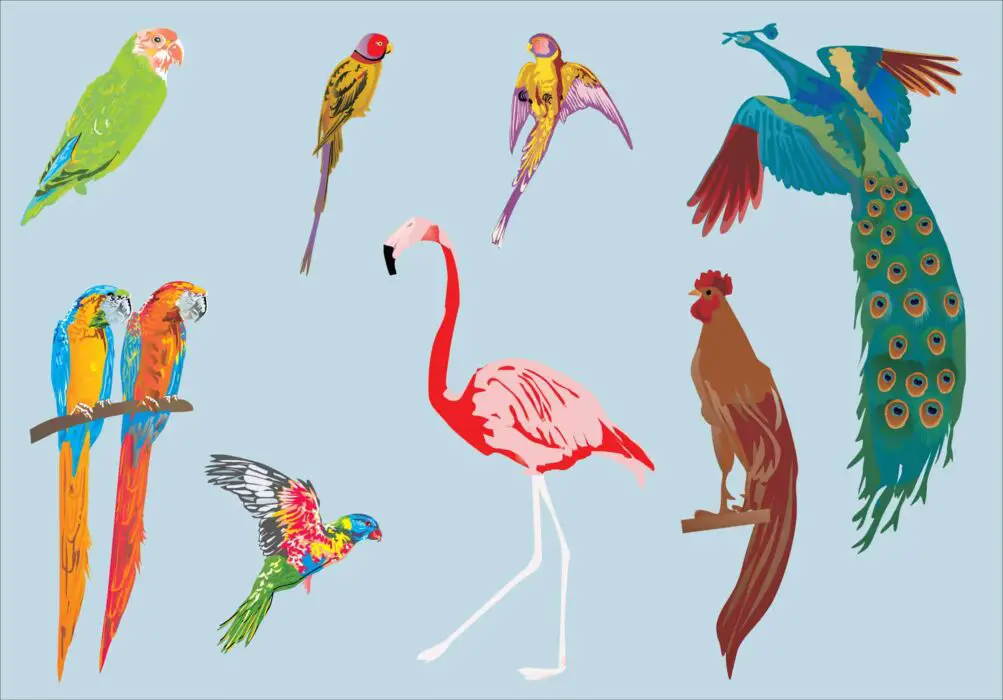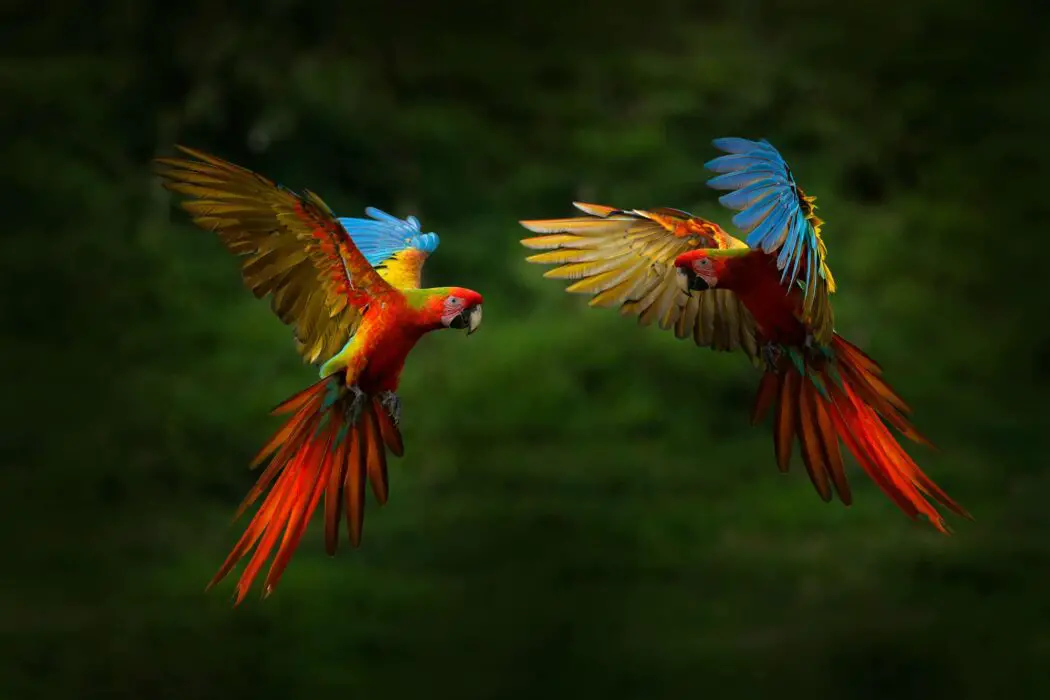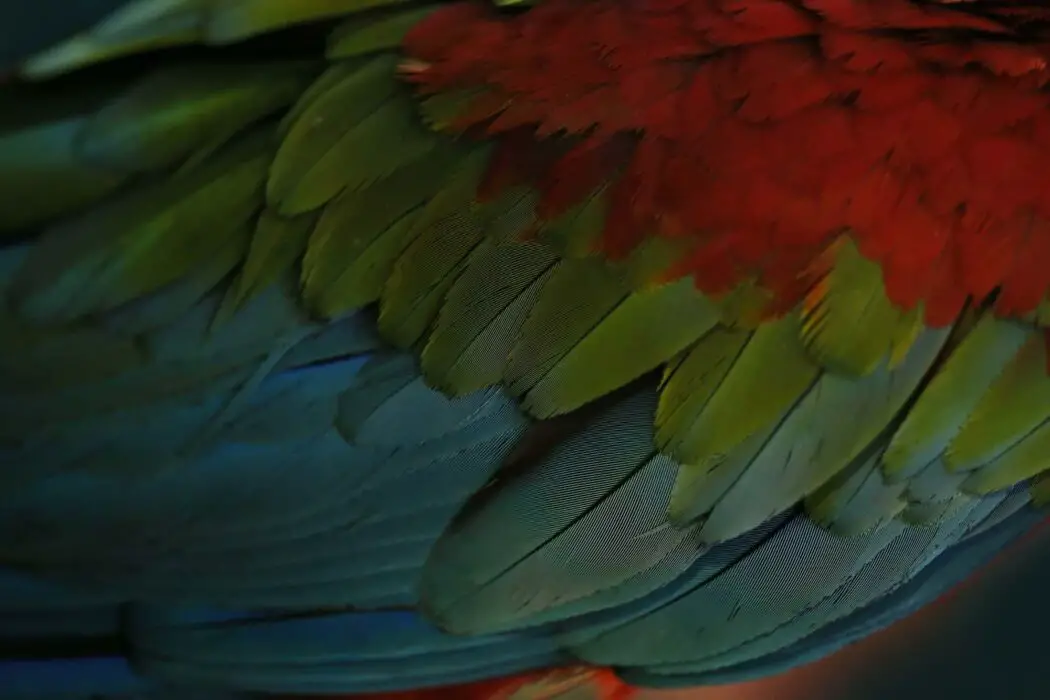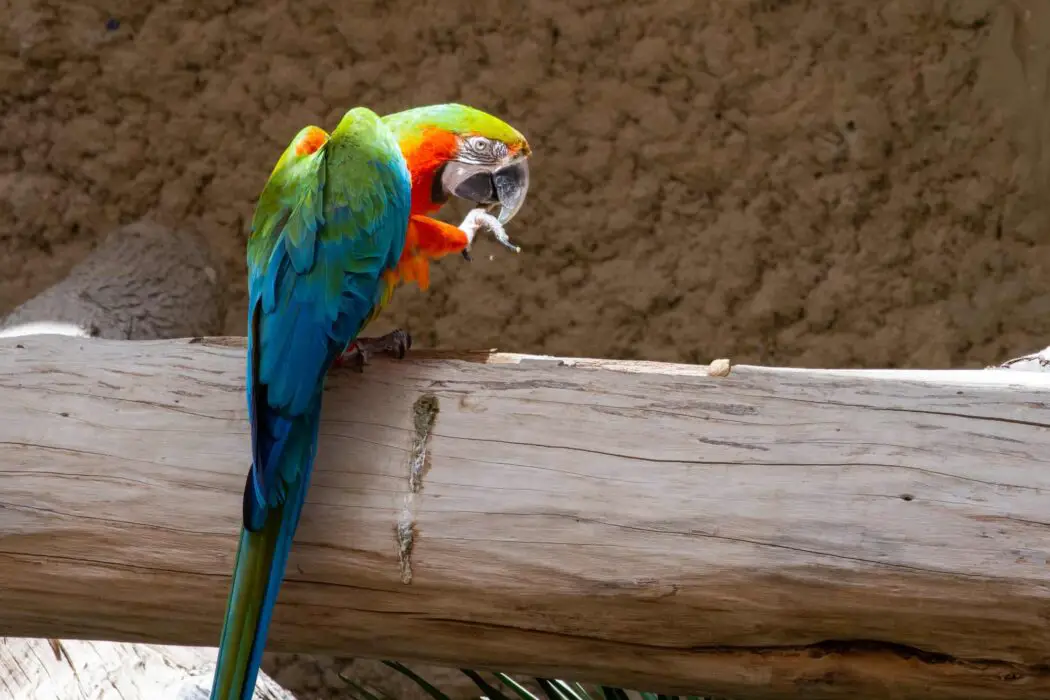Parrots account for 92 genera and a total of 393 species. That is quite a lot if you try to imagine all the different types. Overall, they can be divided into three prominent families: true parrots, New Zealand parrots, and cockatoos. With such a diverse variety, there is hardly an issue in finding a mating pair. Parrots are numerous and can crossbreed if the need occurs. In fact, parrot “hybrids” are a relatively common deal in the wild.
However, have you ever thought about the breeding opportunities between parrots and other bird species? Wouldn’t it be amazing to combine some distinct birds? But there is an issue of biology – is this even possible?
Unfortunately, no. Parrots cannot breed with other types of birds. The genetic gap is too wide between all bird families for parrots to find a mate somewhere else. So we have to enjoy only the “hybrids” of parrots crossbreeding and nothing more.
While hybridization is common, it’s the maximum degree of variety we can expect. Even modern science hasn’t yet reached a degree to pair off two different bird families into a super rare bird! Just imagine how cool of a talking bird would be a cross between a parrot and a crow? In my article on Can Crows Talk like Humans, I’ve already mentioned that these birds have a deeper voice that more resembles a human tone! Crossbreeding often occurs among the birds of the same genus, even among parrots. That is why you can often find macaws of mixed types as they all are suitable mates. Such a condition makes breeding with other birds impossible. However, crossbreeding between different genera is still possible, though it’s scarce.
What Parrots Can Breed With Other Birds?

As I’ve mentioned, interbreeding is not possible. The most you can expect is the crossbreeding between different genera of parrots. And even then, there is a high chance that the offspring will turn out to have certain defects or be infertile. It’s not a 100% consequence, but the chances are high.
If you’d like to create a parrot hybrid, the possibility exists within the Neophema genus that can interbreed. You can also try to add a Bourke’s parrot to the mix as there is a chance. But be very careful in the process. Lovebirds can also create “colorful” offspring.
Various parakeets can mate with different types of parakeets and an Indian Ringneck Parrot, for example. These are only a few examples of parrots that can mate with different parrot types. However, I hope that you take this information as theoretical knowledge only. I’d still leave hybridization to professional parrot breeders. They’ll know how to make it carefully and safely so that offsprings are fertile as well.
Some lorikeets can also inbreed in the wild, but their offspring are mostly infertile. Thus, you never know dangers await birds if you put unsuitable mates in a cage together.
Are Parrots Easy To Breed? 5 Steps to Go Through
Should You Crossbreed Parrots?
No, it’s better not to experiment on your own. As I’ve mentioned, you never know the result. And why harm a potential life form just for your entertainment?
You should contact professional breeders if you have a pair in mind and ask for them. Of course, they also give no guarantees of success, but their experience is rich and knowledge superior to yours and even mine. I’ve worked with them, trust me!
Outbreeding depression is a dangerous outcome of such experiments. You narrow the gene pool and poor health in hybrids.
In contrast, a positive outcome (more common among professionals) is a healthy bird with strong genes that surpasses its parents. It’s called hybrid vigor. And it’s perfectly normal to want such a bird, but bear in mind that it’s not always the outcome.
What Are the Benefits of Crossbreeding and Hybridizing Parrots?
If done in a safe environment, crossbreeding parrots comes with many benefits.
- For once, it favors the good treats of both parrots and transfers them to the offspring. Thus, you make future generations stronger. It also means that your pets will live longer and look even more mesmerizing.
- In addition, it can save endangered species if you crossbreed them with stronger and more populous parrot types.
- The third benefit is disease elimination. While you may be initially looking for specific visual changes and improvements, you’ll learn to appreciate the health benefits – a possible elimination of various diseases. Imagine that you can get rid of certain risks overall via crossbreeding. I think you’ll be grateful.
What Are the Disadvantages of Crossbreeding and Hybridizing Parrots?

Along with the numerous benefits, the process comes with risks!
- The biggest is the reduction of the gene pool and the decrease of parrot diversity. So, unfortunately, a thing that is meant to make parrots stronger overall can weaken the family.
- Increased vulnerability over diseases. Yes, this is a massive contradiction over what I’ve mentioned previously in the benefits. This is a rare negative side, but it occurs. Such diseases may target specific genes. And if more hybrids share the gene, they become more susceptible to their mass.
- Dangerous traits. On their own, traits are not dangerous. However, when you try to reproduce a set of certain features and traits, they can ultimately harm an animal’s health. Just think of the numerous dog breeds that have gotten changed over time drastically and now suffer from many conditions. This is the result of excessive crossbreeding. Sometimes, you can give it a poor digestive system or a weak skeleton. On other occasions, the consequences are more all-encompassing.
- Breeding depression. It means that the hybrid comes weaker overall and suffers from many health issues. This is one of the most significant disadvantages.
- Extinction of pieces. Contrary to saving endangered species, if the breeding is done poorly, the species can disappear at all. Some genes will be lost in the process. Many offsprings will be infertile. And turning back time is not yet in our hands! It’s better not to meddle with evolution than to speed up the process of extinction.
How Often Lovebirds Lay Eggs? Breeder’s Guide
Are Hybrid Parrots Fertile?
There is no uniform answer to that. The offspring can be both fertile and infertile. It all depends on many factors and is sometimes unexpected.
In the wild, there are reported cases of fertile chicks. In captivity, success is also achievable. There is no certainty in either, however. All we can do is study the research and anecdotal evidence, and hope for the best outcome.
What Is the Crossbreeding Debate?
The ethics of crossbreeding are debated. Some people consider it a path of evolution, others a moral perversion. Who is right? Who is wrong? There is no specific answer to this question; that is why it’s still a “debate.”
Many breeders highlight the natural processing of crossbreeding and that they are the logical next step in evolution. If nature is doing it anyway, we can participate and help it.
However, many conservationists are opposed. Mixing parrots to make more attractive pets is unethical and somewhat torture to poor birds, they mention. But there is no mention of prolonging their lives and strengthening their health.
All in all, the debate remains open with no certainty.
What Are the Most Popular Parrot Crossbreeds?
Macaws are numerous families and can effectively crossbreed. You can find a complete list of Macaw types in my previous articles. Such diversity and compatibility make them some of the most popular hybrids you’ll find in the wild and captivity to become your friend.
Camelot Macaw
This is a lovely hybrid between a Scarlet Macaw and a Catalonia Macaw. Camelot birds are very affectionate and playful. At the same time, this is not a money bird. It requires lots of socialization that won’t throw tantrums if it doesn’t get it. These birds have a more patchy coloring, thus mixing yellow, orange, red, green, and blue in all sorts of places. Camelot’s usually have blues and greens on their wings and tails; the warmer colors cover the bodies and heads.
Catalina Macaws

This bird is also called a Rainbow Macaw due to its diverse colorings covering all the bright parrot hues. This hybrid derives from crossing a Scarlet Macaw with a Blue and Gold Macaw. The resulting bird gathers all the colors of its parents as well as their comical and playful personalities. However, it surpasses both of them is the ability for training! This is a hybrid that is rarely found in the wild, primarily bred in captivity.
Harlequin Macaws

How Often Conures Lay Eggs? Breeder’s Guide
Conclusion
Overall, parrots can breed with other parrots of the same genus or the ones close enough in nature. However, breeding with non-parrot species is impossible due to a wide genetic gap.
However, even crossbreeding among parrots can bring excellent results! The successful hybrids receive stronger health, the best traits of their parents, and can even live longer. However, not all is so bright. There is an ongoing debate on whether hybridization is ethical. Besides, the unfortunate results produce chicks with weak health, infertility, and possibly even mutations.
Overall, I recommend leaving crossbreeding to the experts who can create healthy and solid pets for you! Anyway, whether your bird is a crossbreed or not, it deserves the same amount of love and attention!


